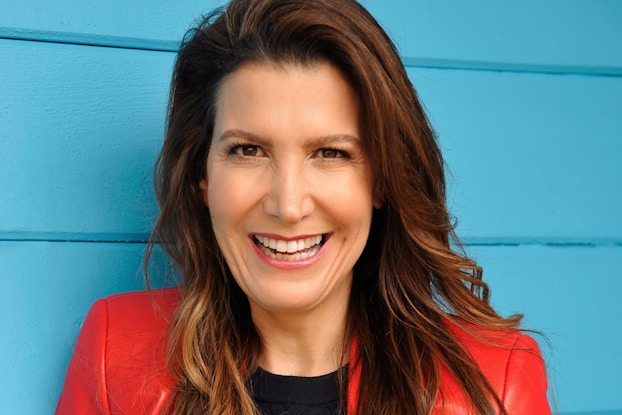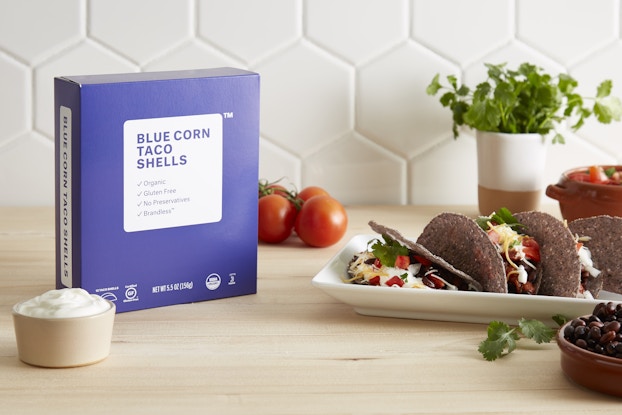
To hear Tina Sharkey describe the household goods e-commerce startup she co-founded with Ido Leffler, you wouldn’t think they were trying to sell anything at all.
“Brandless is a community, first and foremost,” Sharkey told CO—, defining the e-commerce company that sells a variety of food and household products. “So that community at times is virtual, at times is physical,” she continued, “because our community starts with our team, but then very quickly extends to the people that we get to connect, communicate, and share with.”
To that end, she said, “We don't think of our customers as ‘customers,’ we think of them like people. How are they any different than any other person? And we treat them the way they want to be treated.”
But selling things — specifically an assortment which has grown to about 400 items that range from organic olive and coconut oils to knives, tree-free facial tissue, plant-based organic baby food, and nontoxic toys, among other things ranging from $2 to $12 — is exactly what Brandless is trying to do.

Interested in a small business membership?
Find out how the U.S. Chamber of Commerce can help your company grow and thrive in today's rapidly-evolving business environment. Connect with our team to learn how a small business membership can benefit your bottom line and help you achieve your goals.
And, so far, it’s working. There’s a growing cadre of devotees dedicated to shopping with Brandless's mission top of mind: “Better stuff, fewer dollars.” Sharkey won’t discuss revenue or customer growth, admitting only that the numbers when going from launch to the end of the first year are naturally 100% higher. She does say every time a customer completes an order at Brandless, the company donates a meal through a partnership with Feeding America. “We've donated well over three million meals since we've started,” she said.
According to data from Edison Trends, which conducts data analysis of email receipts from three million U.S. consumers, 20% of customers purchasing from Brandless for the first time in the final quarter of 2017 bought again in the following quarter, making the startup a contender for customers against Target and Walmart.
Brandless is a community, first and foremost.
Tina Sharkey, Brandless co-founder.
Mission-driven from the start
Sharkey’s quick to point out that Brandless isn’t anti-brand or a generic brand. “We are suggesting the concept that people might want to live more and brand less,” she said. Since the company launched a little over a year ago (in 2017), the product assortment has grown from 110 items to 400. Sharkey says it’s continuing to expand into other areas, like cookware, which she enthuses at length on the merits of acacia wood, silicone spatulas and professional baking pans (the latter of which are just $9).
Beyond this, Sharkey adds, with no small measure of excitement in her voice, is Brandless’s water-free, nontoxic, EPA Safer Choice-certified cleaning collection. The cleaning starter kits are essentially spray bottles that arrive empty, along with a collection of capsules. The consumer just adds water. “One of the values of Brandless, as we continue to evolve and innovate with our supply chain, is to try and build for ship, not shelf,” Sharkey explained. In the cleaning line’s case, “You make it at home,” she said, “so we’re not shipping water.”
Perhaps that’s why the startup has attracted a significant amount of investment. In July 2018, SoftBank’s $100 billion Vision Fund invested $240 million in Brandless, putting the company’s valuation at just north of $500 million. Prior to that, Brandless raised $51 million in three rounds of funding, according to Bloomberg, from donors including NEA, Redpoint, GV, and NBA champions Stephen Curry and Nick “Swaggy P” Young.

It’s all about the people
Sharkey’s emphasis, though, is about relationship building. She’s no stranger to it, given her experience founding one of the first female-centric online media companies, iVillage, and leading the parenting site, BabyCenter.
Similarly, while relationships with Brandless begin virtually because the company is e-commerce first, Sharkey notes there are also Brandless meetups. Meetups range from small to large, “whether it's the vegans of LA, or a moms club, or a group of stylists who want to learn about our beauty collections,” with the common thread being the people who share the Brandless mission, Sharkey explained. Meetup attendees can be leaders in creating content and experiences that the brand can then put back out into its broader community.
Recipes and hacks abound on the Brandless blog (think: how to take the water from the inside of Brandless organic garbanzo beans and turn that into a vegan meringue) and get shared on Instagram.
Another method to bring the virtual community together is Brandless’s use of email to solicit community feedback. “So we'll hear about an engagement or an upcoming baby or a new home purchase,” Sharkey said.

The best places to continue online relationships
Beyond Brandless meetups, the company will continue to experiment with brick-and-mortar experiences. “They're not mutually exclusive,” Sharkey said, explaining that the brand must find ways to continue to connect “IRL” (in real life), through Brandless pop-up shops, for example, which is what it did last year in Los Angeles and New York City.
“We had lines around the block,” Sharkey said of the West Village pop-up shop in Manhattan. Shoppers could taste snacks and shop every Brandless item virtually because there was no inventory to sell on the spot. And they could also learn about what they were buying in a new way. At the fair-trade organic coffee bar, for instance, those sampling a cup of joe learned that if every single American drank one cup of fair-trade coffee, $2 million would go to those farmers in just in that one day, Sharkey said.
And while pop-up shops have been a convenient foray for digital-first brands to dip their toes into physical retail (think Everlane), Sharkey isn’t totally opposed to expanding into that most traditional space in retail — the mall.
“Every zip code is going to inform how we might show up,” Sharkey said. “I see us more as a neighborhood brand. We'd want to neighbor more, brand less. So, if the mall is the center of that neighborhood, then maybe,” she says.
The most important thing about physical space, according to Sharkey, is to make sure that it connects with the customer. “Giving them an opportunity to do something, [where] virtual spaces can't produce that same experience, that same connection, that same feeling of, ‘I'm seen, I'm here, I'm valued,’ is priceless” she said.
As the company continues on its trajectory, Sharkey maintains, “There's a better way to do a lot of things, starting with building a company, then extending to building a team, and then extending to building a community.”
CO— aims to bring you inspiration from leading respected experts. However, before making any business decision, you should consult a professional who can advise you based on your individual situation.
CO—is committed to helping you start, run and grow your small business. Learn more about the benefits of small business membership in the U.S. Chamber of Commerce, here.




